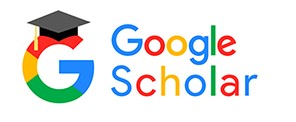Work from Home: The impacts on university employee’s well-being and individual work performance
Keywords:
individual work performance, well-being, work from homeAbstract
During the COVID-19 pandemic, the majority of the firms and institutions implemented work from home to continue their operations and keep the well-being of their employees. Indeed, organizations including the universities operate successfully amid the implementation of quarantine, digitalization, and limited face-to-face communication. We studied the impacts of the acceptance of work from home and well-being on individual work performance. We found that acceptance of work from home have indications of significant influences on employees' well-being and individual work performance. For the selected university employees, work from home is moderately preferred because of the cherished activities like commuting, time with friends, and the occurrence of more physical activities. The incidence of illnesses, sleep disturbance, anxiety, dissatisfaction, and loneliness were indicators of well-being concerns that influence individual work performance. Appreciation by others and the increased spirituality motivate the employees during the work from the home set-up. COVID-19 pandemic brings various issues in communication, resources, emotions, environment, financial difficulties, work-life imbalance, time management, stress, less work, and lack of access to office materials, to the employees. However, there are opportunities for better learning, better well-being, and more often family routines. Focus on work, work-life balance fit, positive attitude, less stress, and savings are benefits of working from home. University leadership, supervisors, and managers have an overview of the issues to be provided with solutions. The qualitative responses are potential research instruments to be tested for reliability. An adequate number of employees in different positions and universities to create a quantitative model is encouraged for future researchers.
References
Anderson, D. R., Sweeney, D. J., Williams, T. A., Camm, J. D., & Cochran, J. J. (2018). Modern Business Statistics with Microsoft Office Excel (6th ed.). SouthWestern/Thomson Learning.
Arruda, W. (2020). Ways COVID-19 will change the workplace forever. Working from home effectiveness during Covid-19: Evidence from university staff in Indonesia. Asia Pacific Management Review, 27 (1), 50-57. https://doi.org/10.1016/j.apmrv.2021.05.002
Bakker, A. B., & Demerouti, E. (2018). Multiple levels in job demandsresources theory: Implications for employee well-being and performance. In E. Diener, S. Oishi, & L. Tay (Eds.), Handbook of Well-being. DEF Publishers. https://doi.org/nobascholar.com
Brown, C., Spiro, J., & Quinton, S. (2020). The role of research ethics committees: Friend or foe in educational research? An exploratory study. British Educational Research Journal, 46 (4), 747-769. https://doi.org/10.1002/berj.3654
Cankir, B. & Sahin, S. (2018). Psychological well-being and job
performance: The mediating role of engagement. Hitit Üniversitesi Sosyal Bilimler Enstitüsü Dergisi – Yıl, 11 Sayı 3, 2550-2560. https://www.researchgate.net/publication/330022893_Psychological_Well-Being_and_Job_Performance_The_Mediating_Role_of_Work_Engagement
Charoensukmongkol, P. & Phungsoonthorn, T. (2020). The interaction effect of crisis communication and social support on the emotional exhaustion of university employees during the COVID-19 crisis. International Journal of Business Communication, 1–18. https://doi.org/10.1177/2329488420953188
Creswell, J.W. (2013). Steps in conducting a scholarly mixed methods study. DBER Speaker Series, 48, 1-54. https://digitalcommons.unl.edu/dberspeakers/48
Drasler, V., Bertoncelj, J., Korosec, M., Zontar, T. P., Ulrih, N. P. & Cigic, B. (2021). Difference in the attitude of students and employees of the University of Ljubljana towards work from home and online education: Lessons from COVID-19 pandemic. Sustainability, 13 (5118), 1-24. https://doi.org/10.3390/su13095118
Evanoff, B. A., Strickland, J. R., Dale A. M., Hayibor, L., Page, E., Duncan, J. G., Kannampallil, T. & Gray, D. L. (2020). Workrelated and personal factors associated with mental well-being during the COVID-19 response: Survey of Health Care and Other Workers, 22 (8), 2-11. https://www.jmir.org/2021/4/e29069
Fakis, A., Hilliam, R., Stonely, H. & Towned, M. (2014). Quantitative analysis of qualitative information from interviews: A systematic literature review. Journal of Mixed Methods Research, 8 (2), 139-161. https://doi.org/10.1177/1558689813495111
Funder, D. C. & Ozer, D. J. (2019). Evaluating effect size in psychological research: Sense and nonsense. Advances in Methods and Practices in Psychological Science, 2(2), 156–168. https://doi.org/10.1177/2515245919847202
Gandy, W. M., Coberley, C., Pope, J. E., Wells, A. & Rula, E. Y. (2014). Comparing the contributions of well-being and disease status to employee productivity. Journal of Occupational and Environmental Medicine. https://doi.org/10.1097/JOM.0000000000000109
Hair, J. F., Risher, J. J., Sarstedt, M. & Ringle, C. M. (2019). When to use and How to report the results of PLS-SEM. European Business Review, 31 (1), 2-24. https://doi.org/10.1108/EBR-11-2018-0203
Hashim R., Bakar, A., Noh, I. & Mahyudin, H. A. (2020). Employees’ job satisfaction and performance through working from home during the pandemic lockdown. Environment-Behaviour Proceedings Journal, 5(15), 461-467. https://doi.org/10.21834/ebpj.v5i15.2515
Ipsen, C., van Veldhoven, M., Kirchner, K., Hansen, J.P. (2021).Six key advantages and disadvantages of working from home in Europe during COVID-19. Int. J. Environ. Res. and Public Health, 18 (1826). https://doi.org/10.3390/ijerph18041826
Irawanto, D. W., Novianti, K. R. & Roz, K. (2021). Work from home: Measuring satisfaction between work-life balance and work stress during the COVID-19 pandemic in Indonesia. Economies, 9, 96. https://doi.org/10.3390/economies9030096
Giovanis E. & Ozdamar O. (2021) Implications of COVID-19: the effect of working from home on financial and mental well-being in the UK. Int J Health Policy Management, 1-7. http://doi.org/10.34172/ijhpm.2021.33
Koopmans, L., Bernaards, C. M., Hildebrandt, V. H., de Vet H. C. W. & van der Beek, A. J. (2014). Construct validity of the individual work performance questionnaire. Journal of Occupational and Environmental Medicine, 56 (3), 332-337. https://doi.org/10.1097/JOM.0000000000000113
Loewenstein, G., Cain, D. M. & Sah, S. (2011). The Limits of transparency: Pitfalls and potential of disclosing conflicts of interest. American Economic Review: Papers and Proceedings, 101 (3), 423–428. https://doi.org/10.1257/aer.101.3.423
Mäkiniemi, J.-P., Oksanen, A. & Mäkikangas A. (2021). Loneliness and well-being during the COVID-19 pandemic: The moderating roles of personal, social and organizational resources on perceived stress and exhaustion among Finnish University employees. Int. J. Environ. Res. Public Health, 18, 7146. https://doi.org/10.3390/ijerph18137146
Mihalache, M. & Mihalache, O. R. (2021). How workplace support for the COVID-19 pandemic and personality traits affect changes in employees' affective commitment to the organization and jobrelated well-being. Human Resources Management, 1-20. https://doi.org/10.1002/hrm.22082
Miller, B. (2014). Free statistics and materials by Bill Miller. https://openstat.info/OpenStatMain.htm
Nangoy, R., Mursitama, T. N., Setiadi, N. J. & Pradipto, Y. D. (2020). Creating sustainable performance in the fourth industrial revolution era: The effect of employee’s work well-being on job performance. Management Science Letters, 10, 1037–104. https://doi.org/10.5267/j.msl.2019.11.006
Nielsen, K., Nielsen, M. B., Ogbonnaya, C., Känsälä, M., Saari, E. & Isaksson, K. (2017). Workplace resources to improve both employee well-being and performance: A systematic review and meta-analysis. Work & Stress, 31 (2), 101-120. https://doi.org/10.1080/02678373.2017.1304463
Pfaff, K. A., Baxter, P. E., Jack, S. M., & Ploeg, J. (2014). Exploring new graduate nurse confidence in interprofessional collaboration: A mixed-methods study. International Journal of Nursing Studies, 51 (8), 1142-1152. https://doi.org/10.1016/j.ijnurstu.2014.01.001
Prasath, P. R., Bhat, C. S., Mather, P. C., Foreman, T., & James, J. K. (2021). Wellbeing, psychological capital, and coping of university employees during the COVID-19 Pandemic. The Journal of the Professoriate, an affiliate of the Center for African American Research and Policy. ISSN 1556-7699
Ringle, C. M., Wende, S., Becker, J. M. (2015). Smartpls3. Bonningstedt: SmartPLS. http://www.smartpls.com
Sabwami, K. M., Areba, G. N. & Abenga, N. (2020). Effect of principals’ practices of transformational leadership on the management of school financial resources in public secondary schools of Trans-Nzoia County, Kenya. Journal of Research Innovation and Implications in Education, 4 (3), 101-112. http://www.jriiejournal.com
San Beda University (n.d.). San Beda University. https://en.wikipedia.org/wiki/San_Beda _University
Schifano, S., Clark, A.E., Greiff, S., Vögele, C. & D'Ambrosio, C. (2021). Well-being and working from home during COVID-19. Information Technology & People, published ahead-of-print https://doi.org/10.1108/ITP-01-2021-0033
Song, Y., Gao, J. (2018). Does telework stress employees out? A study on working at home and subjective well-being for wage/salary workers. IZA Discussion Papers, No. 11993, Institute of Labor Economics (IZA), Bonn. https://www.iza.org/publications/dp/11993/does-telework-stress-employees-out-a-study-onworking-at-home-and-subjective-well-being-for-wagesalaryworkers
Subedi, D. (2016). Explanatory sequential mixed method design as the third research community of knowledge claim. American Journal of Educational Research, 4 (7), 570-577. https:// doi.org./10.12691/education-4-7-10
Supranowicz, P. & Paz, M. (2014). Holistic measurement of well-being: Psychometric properties of the physical, mental and social wellbeing scales (PMSW-21) for adults. Rocz Panstw Zakl Hig, 65 (3), 251-258.
Warren, M. A., & Bordoloi, S. D. (2020). When COVID-19 exacerbates inequities: The path forward for generating wellbeing. International Journal of Wellbeing, 10 (3), 1-6. https://doi:10.5502/ ijw.v10i3.1357
Wong, A.H.K., Cheung, J.O. and Chen, Z., (2020). Promoting effectiveness of “working from home”: findings from Hong Kong working population under COVID-19. Asian Education and Development Studies, 1-19. https://doi.org/10.1108/AEDS-06-2020-0139
Yan, R., Basheer, M. F., Irfan, M. & Naveed, R. T. (2020). Role of psychological factors in employee well-being and employee performance: An empirical evidence from Pakistan. Revista Argentina de Clínica Psicológica, 29(5), 638-650. https://doi.org/10.24205/03276716.2020.1060
- PDF | 505
- Abstract Views | 612
Published
How to Cite
Issue
Section
Copyright (c) 2023 Jobe Viernes, Michael Pasco

This work is licensed under a Creative Commons Attribution-NonCommercial-NoDerivatives 4.0 International License.











